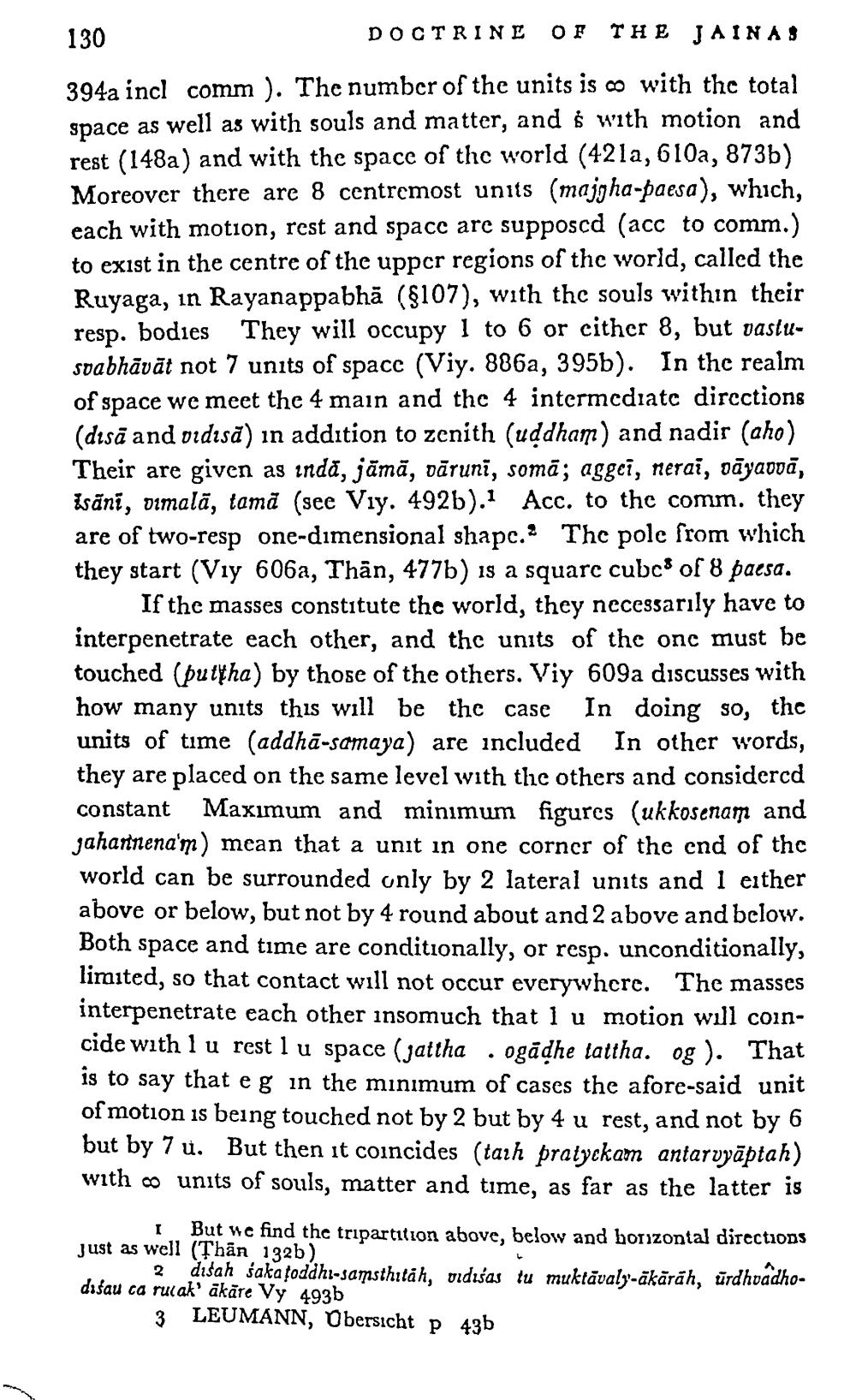________________
130
DOCTRINE OF THE JAINAS 394a incl comm ). The number of the units is co with the total space as well as with souls and matter, and s with motion and rest (148a) and with the space of the world (421a, 6100, 873b) Moreover there are 8 centrcmost units (majgha-paesa), which, each with motion, rest and spacc are supposcd (acc to comm.) to exist in the centre of the upper regions of the world, called the Ruyaga, in Rayanappabhā ($107), with the souls within their resp. bodies They will occupy 1 to 6 or cither 8, but vastusoabhāvāt not 7 units of space (Viy. 886a, 395b). In the realm of space we meet the 4 main and thc 4 intermediate dircctions (disā and ordısa) in addition to zenith (uddham) and nadir (aho) Their are given as indā, jāmā, dāruni, somā; aggci, nerai, vāyadā, Isäni, dimalā, tamă (see Viy. 492b).1 Acc. to the comm. they are of two-resp one-dimensional shape. The pole from which they start (Viy 606a, Thän, 477b) is a square cubcs of 8 paesa.
If the masses constitute the world, they necessarily have to interpenetrate each other, and the units of the one must be touched (puttha) by those of the others. Viy 609a discusses with how many units this will be the case In doing so, the units of time (addhā-samaya) are included In other words, they are placed on the same level with the others and considered constant Maximum and minimum figures (ukkosenam and jaharinena'm) mean that a unit in one corner of the end of the world can be surrounded only by 2 lateral units and I either above or below, but not by 4 round about and 2 above and below. Both space and time are conditionally, or resp. unconditionally, limited, so that contact will not occur everywhere. The masses interpenetrate each other insomuch that I u motion will coincide with 1 u rest 1 u space (jattha . ogādhe lattha. og ). That is to say that eg in the minimum of cases the afore-said unit of motion is being touched not by 2 but by 4 u rest, and not by 6 but by 7 u. But then it coincides (tarh pratyckam antarvyāptah) with units of souls, matter and time, as far as the latter is
But we find the tripartition above, below and horizontal directions just as well (Thân 132b)
2 disah saka toddhi-samsthitäh, odišas tu muktāvaly-ākārāh, urdhvadhodisau ca rucak' akāre Vy 493b
3 LEUMANN, Obersicht p 43b




